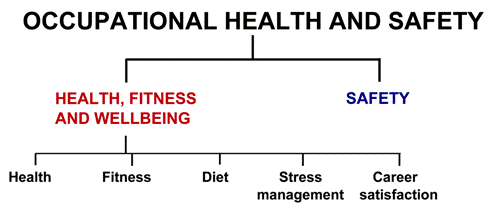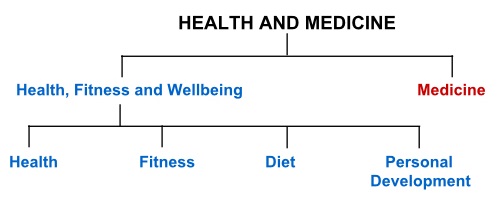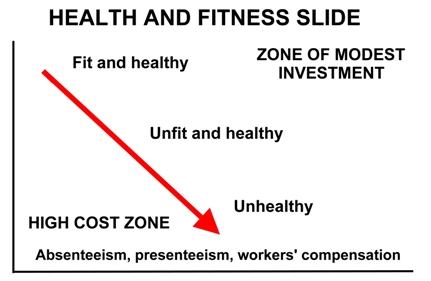|
|
||||||||||||||||||||||||||
|
Measuring and Managing Risk |
||||||||||||||||||||||||||
|
Measuring and Managing the risk in the workplace |
Our aim is to
HEALTH, FITNESS AND WELLBEING
In a sedentary society it's a big ask expecting people to be healthy without keeping themselves fit. We work with organisations who want to focus on the health, fitness and wellbeing side of the OH&S equation, on dysfunction rather than injury. These days, that's where most of the OH&S costs are being accrued, from people with low levels of health and fitness, not from people tripping over cords and falling off ladders.
In fact a high proportion of costs are coming from people who sit down all day. Their personally-generated dysfunctions are being accepted by their employers as work-related injuries. This is not something you have to put up with. All you have to do is better manage the risk. We show you how.
Many organisations are currently at great risk of paying for body system dysfunctions that are not of their causing because they are neither effectively measuring, nor managing the risk of poor health.
A similar model can be used to explain the difference between 'health' and 'medicine' in the general community.
THE EPIDEMIC OF POOR HEALTH
We're living in an era where the epidemic of poor health is increasing at an exponential rate. If it wasn't, the government of Australian would be spending less each year protecting the medical industry.
It's not so much diseases that are the problem but the personally generated body system dysfunctions.
These dysfunctions are recognised by their symptoms
With some exceptions, poor function can be restored to good when people make a change to their lifestyle - become fitter, eat wisely, meditate, better manage the stress of their life, move to the job they're really like to do ...
THE OH&S AND MEDICAL FIREWALLS
In the community it's become normal practice for the cost of personally-generated body system dysfunctions to be transferred to the public purse.
Without a firewall between personally-generated dysfunctions and the medical system, governments will will be bankrupted. The firewall requires the fitness industry to elbow its way into the frontline of primary health care, so that the first place people think of going to for advice and a treatment of their dysfunctions is a fitness centre, not a surgery or hospital.
If a lack of aerobic fitness, strength and flexibility is a primary cause of most body system dysfunctions i8t makes sense fo9r people to first work on fixing themselves up. If that doesn't work, the secondary point of call is the surgery and/or the hospital.
In the workplace it's time to put up a firewall between privately induced body system dysfunctions and work-related injuries. Do that and you'll save your workplace an absolute fortune.
We don't believe there is any organisation who can afford to have the personally generated body system dysfunctions treated as work-related injuries. The number of organisations being lumbered with costs that are not of the organisations causing are legion. The cost to the bottom line is huge.
In the 20th Century the focus was on reducing costs by improving safety. In the 21st Century the big cost savings will be in improving health, fitness and wellbeing.
THE HEALTH AND FITNESS SLIDE
We believe making an investment in employee health, fitness, wellbeing and career satisfaction makes a valuable contribution to an organisation's bottom line. Organisations can make a choice - modest investment or high cost.
Miller Health
7 Salvado Place, Stirling (Canberra) ACT
2611 Australia
(02) 6288 7703
|
|||||||||||||||||||||||||





